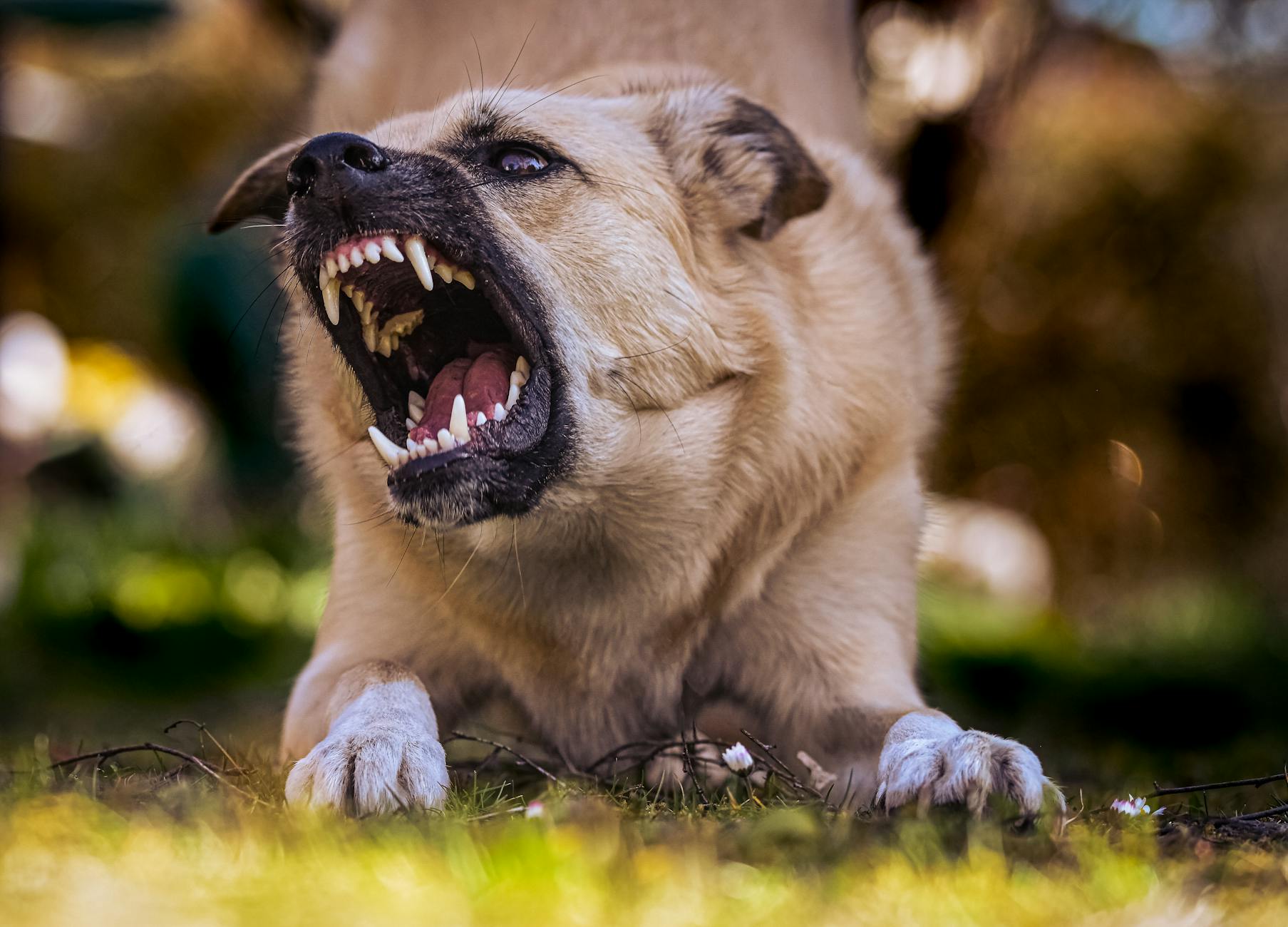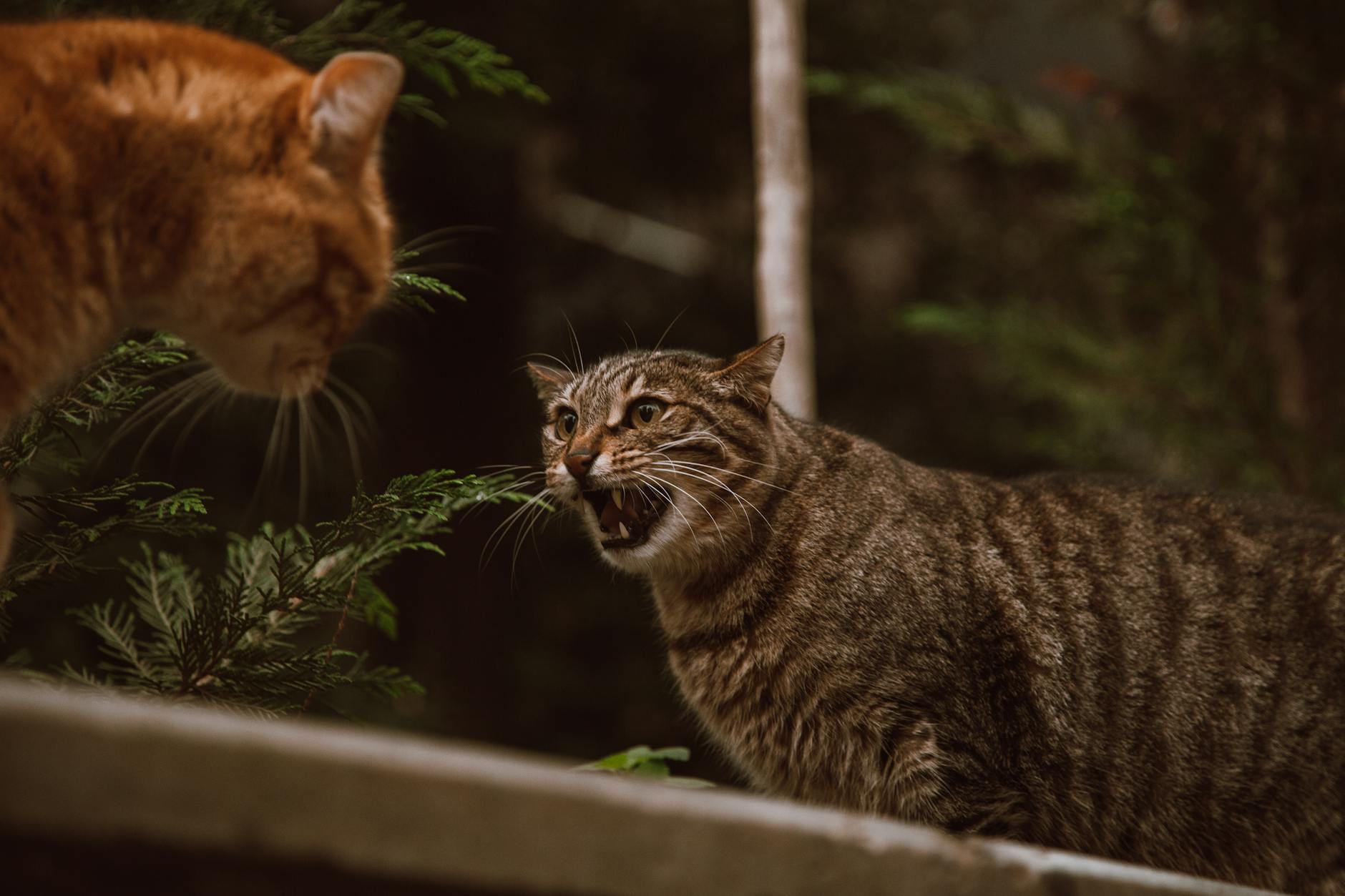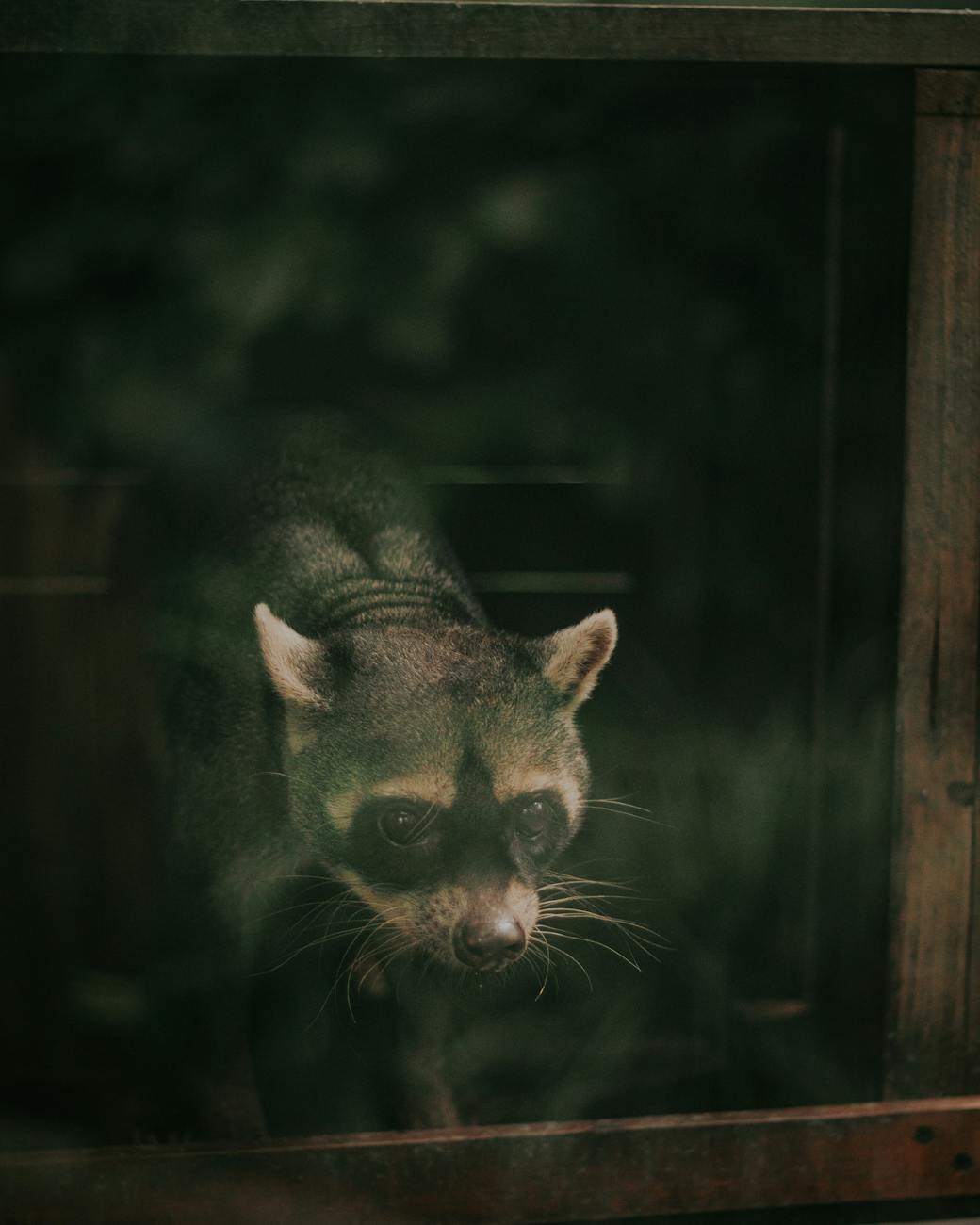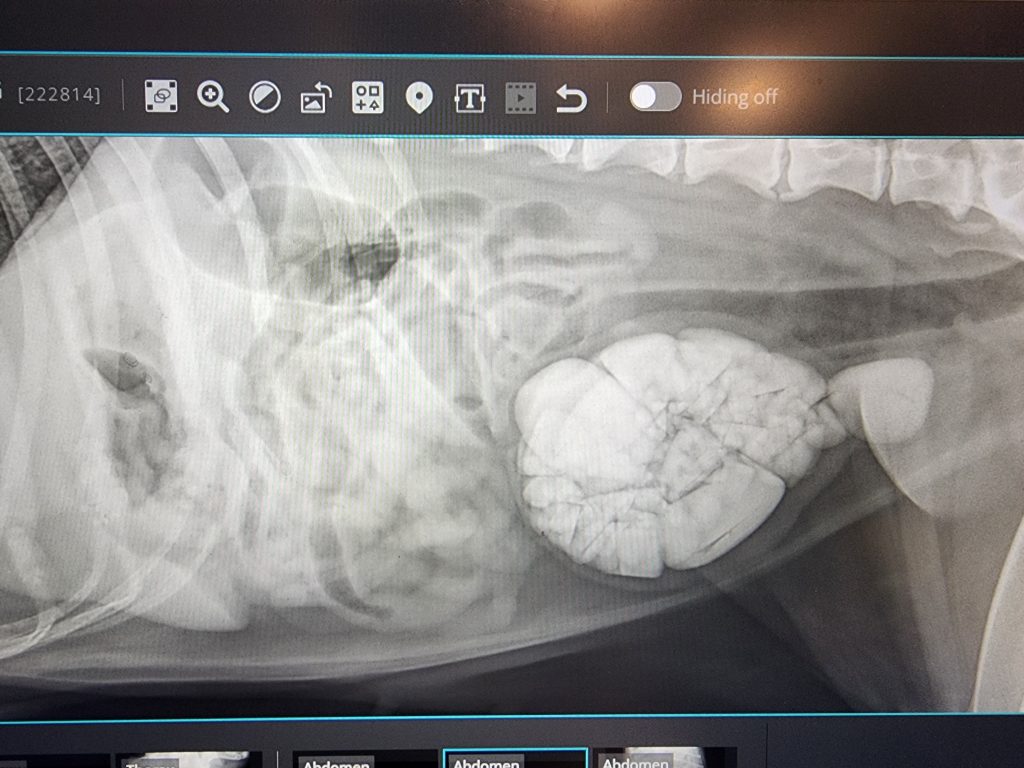
Earlier today, I found out September 28th is World Rabies Day, celebrated annually to raise awareness about rabies prevention and to honor the anniversary of Louis Pasteur’s death, who developed the first rabies vaccine. This caused me to do a little research and I discovered that prior to the 1960s, several hundred people a year died in the US from rabies, and most of them were exposed by a rabid dog. Since the implementation of successful pet vaccination, more than 90% of reported cases of rabies in the US are in wildlife (most commonly foxes, skunks, raccoons, and bats) and typically fewer than 10 people in the US die from rabies each year. In Asia and Africa, dog rabies is still widespread and it results in about 60,000 deaths world-wide each year. The biggest reason for the decrease in overall exposure and fatalities is due to vaccination of pets and post-exposure prophylaxis (PEP) in people. Unfortunately, PEP is expensive and supplies are limited as well.
Certain wildlife species can act as reservoirs for rabies, which means that a large percentage of the population carries rabies at any given time. These reservoirs change by region, so while skunks are the highest risk group in the Southeast, foxes are a bigger risk in the Southwest and Alaska, and in Puerto Rico, over 80% of the mongoose encounters with humans and pets involve animals with rabies. In theory, any mammal can carry rabies, but in our area, skunks, raccoons, foxes, and bats are the Big Four vectors with ground hogs a distant fifth.
(Fun tidbit: the American possum rarely is a rabies vector. As a marsupial, their lower body temperature prevents them from being good hosts for the virus. They can spread leptospirosis, however.)
And the law is not on your side when it comes to a disease that is almost always fatal when contracted by humans.
World Rabies Day got me thinking about the various times rabies has factored into my life as a veterinarian. Rabies vaccination is a victim of its success–to the extent that now I’m often faced with explaining why it is so important to vaccinate your dog or cat for a disease few people will ever deal with personally. Vaccination is still necessary, however. There are times when I might suggest not continuing certain vaccines for one reason or another, but not rabies. For one thing, it is required by law. And the law is not on your side when it comes to a disease that is almost always fatal when contracted by humans. To date, there have been less than 20 documented human cases of rabies in which the victims survived, and those victims had poor functional outcomes. So if your dog or cat gets exposed to a rabid animal, it’s critical to have proof of previous vaccination to prevent severe regulatory consequences. If your dog or cat bites someone, proof of vaccination can go a long way to blunting the consequences of that act.
Frequently, I have to explain the difference between vaccinated and unvaccinated pets in the eyes of the law and in the face of exposure. Mind you, the law can vary from state to state depending on the severity of rabies within that state, so always check with your veterinarian if you have questions regarding these things. But in general, we know that if a dog or cat bites you BECAUSE it has rabies, it will die within 10-14 days. The risk of a vaccinated pet transmitting rabies is extremely low but not impossible, which is why most states enact a quarantine period of 10-14 days for any pet that has bitten someone, regardless of rabies vaccination status. Rabies vaccine effectiveness has not been proven in wolf-hybrids and is generally not recognized in the eyes of the law, which is why in some states, wolf-hybrids that bite are automatically euthanized and tested. There is no way to test a living animal for rabies, as the test requires examination of brain matter. This is one reason why you should never shoot a suspected rabid animal in the head–not only will you destroy the ability to test for rabies, but the virus is in the spinal fluid. The last thing you want to do is spray that around.

But if an animal (or human) is exposed to a rabid animal, it can take up to six months for the virus to effect the brain. Once symptoms of rabies are seen in humans, most die within 1-2 weeks, so the time to intervene with prophylactic treatment is right away at the first suggestion of exposure, before any clinical signs develop. This is because the virus, which is spread through the saliva and is also in spinal fluid, can enter your body through a wound, your eyes, or your open mouth–and then begins its slow journey to your central nervous system. You can see why being exposed through contact with fluids through your eye would reach the brain faster than a bite wound to your foot.
If your pet has been vaccinated prior to the time of exposure, a rabies booster will be given and your pet will likely be quarantined anywhere from 30-90 days depending on the laws in your area. A friend of mine had a dog bring home the head of a rabid skunk. Her dog had to remain quarantined on her property, no access to other people or animals, for 45 days. Even though it is extremely rare for a vaccinated dog to develop rabies, it’s not impossible. No vaccine is 100% effective, and if your dog or cat was sick when they were vaccinated (or given a steroid injection, or there was anything that altered the immune response), the vaccine might be ineffective.
If your pet is UNVACCINATED at the time of exposure, or the rabies vaccine has lapsed and is not up to date, you may be asked to strictly quarantine your pet in a pen within a pen, with no human contact whatsoever for six months. Basically, the assumption is your pet has a good chance of developing rabies from the exposure and every measure must be taken to prevent human exposure. It is a serious undertaking. The health department and animal control will be closely involved to make sure proper quarantine procedures will be taken. And your pet will have no understanding as to why you must cage it like this for so long.

Are there ever any serious reactions to rabies vaccination, both in people or animals? Yes. But I can count on one hand the number of adverse reactions I’ve seen in over 30 years of practice, and none in the last 20 years. Vaccines have come a long way over time. Safety and efficacy have improved tremendously just in the time I’ve been practicing medicine. Vaccines have done a tremendous job of reducing the number of cases and the severity of so many childhood diseases as well. According to an article posted by the American Lung Association, “Around 1900, well before vaccines were available, almost 20% of children died before their fifth birthday and the most common causes were infectious disease that can be prevented by the vaccines we have available today.” In my first job out of school, I worked in an extremely rural community where the vast majority of people didn’t vaccinate their pets for anything but rabies. I saw 40 cases of parvo the last month I was there. I haven’t seen 10 cases of parvo in the last 20 years. I worry that now that so many people are choosing not to vaccinate their pets, we’re going to see a return to those horrible days of isolation wards, PPE, and dogs dying from a preventable disease.
The first time I had any personal dealings with rabies, I was in vet school. Over twenty people were exposed to a rabid calf in the large animal department, students and faculty alike. I was fortunate not to be one of the exposed, but as a result, the decision came down from above that all students were to be vaccinated. This was not a decision taken lightly, but it is something that everyone who works in a high-risk profession, such as veterinarians, wildlife rehabbers, shelter workers, etc should consider. I got my vaccine series without issue and didn’t think about it much afterward. Because many people do react negatively to rabies vaccination, we’re not boosted every so often like dogs or cats. We get our titers checked. More on that later.
In my second year post graduation, I saw a seizuring dog on emergency. Initially, the patient, a stray dog that the clients had been taking care of for about a month, did not respond to any medication. I had a list of differentials that included epilepsy, poisons such as organophosphates or strychnine, canine distemper, and rabies. The patient seemed to spontaneously recover, and looked 100% normal. Eating, drinking, wagging his tail. And then he died. One minute acting normal, the next minute dead. All of the sudden, I had to move rabies to the top of my rule out list. I also had to fight with the local health department to get him tested. I’ll never forget the shocked look on the office manager’s face when she got off the phone with the results from the health department.
Post-exposure prophylaxis consists of two major steps: giving the exposed person a big dose of immunoglobulins that will immediately convey some immunity to the victim (called passive transfer) and then following up with a series of five vaccinations to trigger an active immune response. Everyone who handled or came into contact with this dog had to undergo this treatment–including the entire family who had been taking care of the dog all along. But I had already been vaccinated, so in my case, rather than getting 18 cc of immunoglobulins injected in the largest muscle on my body, they checked my titer first.
Aha! You say. See, if your titer is good, you don’t need boosters. We shouldn’t booster any rabies vaccine, right? WRONG. Because my titer was good, I got to skip the immunoglobulin injection but I still received two boosters (instead of five, like an unvaccinated person). Why? Because rabies will KILL you. If my titer had been low, I would have been treated exactly like an unvaccinated person. Fortunately, none of the people who were exposed to this dog developed rabies. It was the first documented case of rabies in that county in 12 years, which makes me wonder how many cases might have been missed.
I did cancel my dentist’s appointment during the PEP phase. No one questioned that decision.
Only a few years later, 40 people at a church picnic were exposed when someone brought a baby raccoon to the outing. Yes, even baby animals can have rabies. Everyone at the picnic who handled the raccoon had to be given PEP.
Yes, house cats and dogs need rabies vaccinations. I’ve had three clients have rabid bats get in their house. In two situations, not all the animals were up to date on their vaccinations, and the clients had to build a special pen inside another pen, so that it was impossible for anyone to touch the animal in the inner pen, and that pet had to stay in that pen for six months without human contact. In the third house, because we don’t vaccinate Guinea pigs for rabies, nor is there a known quarantine period, the health department required the Guinea pig to be euthanized. No choice.
My sister’s elderly, unvaccinated house cat bit its rescuer during extraction from a house fire. Despite the circumstances of the bite being understandable, the health department almost took my sister’s cat away from her, but eventually allowed home quarantine.

The saddest case I ever had to deal with was an entire litter of beautiful lab puppies. We’d just seen them the week before for their first puppy shots, but they were only 7 weeks old–too young to vaccinate for rabies. A skunk got into the outdoor pen with them where they were being kept and was killed. Confirmed rabies. The clients were given a choice: lock the puppies up in a pen within a pen with no human contact for six months, or euthanize the litter. They chose euthanasia because there was no way the puppies would be normal dogs after such restricted contact for the biggest part of their social and developmental growth. They’d basically be wild animals. It was one of the most devastating things I’ve ever had to do as a veterinarian.
The most frustrating case I dealt with wasn’t actually a case of rabies but a situation in which I tried to persuade a client to stop letting an unvaccinated feral tomcat come inside and sleep on her three-year-old son’s bed at night.
“Ma,am. At the very least, you must get this cat vaccinated for rabies.”
She looked at me without comprehension. “Why? What does rabies do to you anyway?”
I gave her all the reasons why letting this unneutered, unvaccinated tomcat sleep with her child was a terrible idea. And then I told her to go watch Old Yeller. I’d say the same to you. If you have doubts about vaccinating for rabies, please. Go watch Old Yeller.
